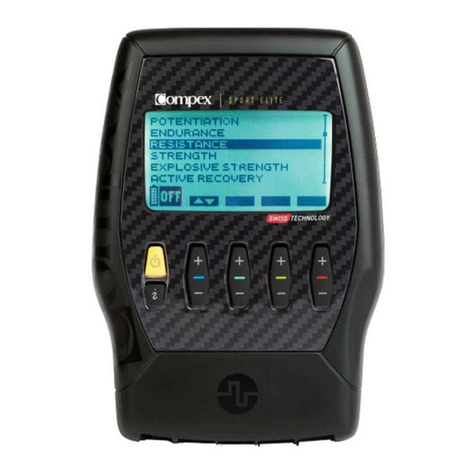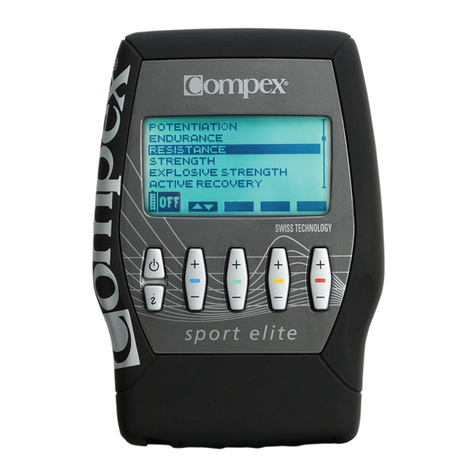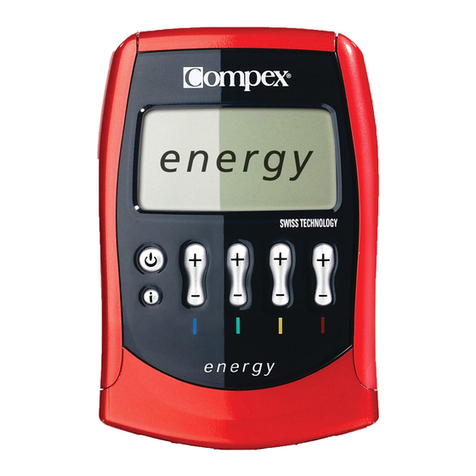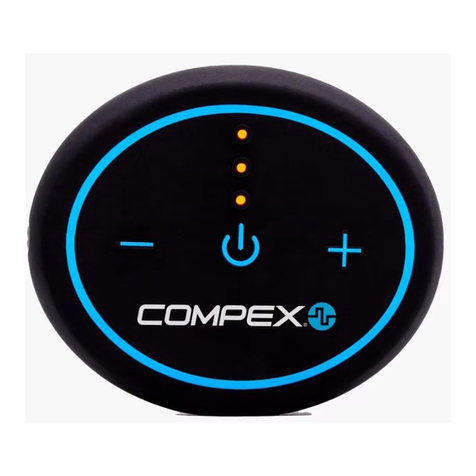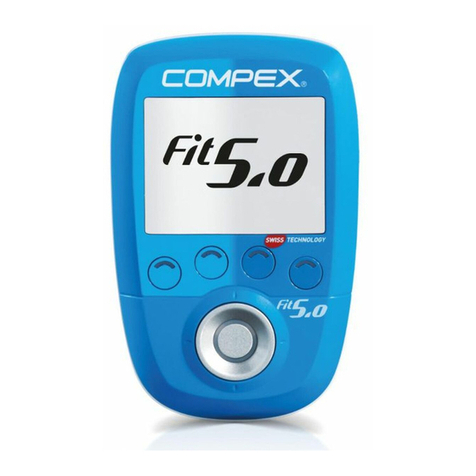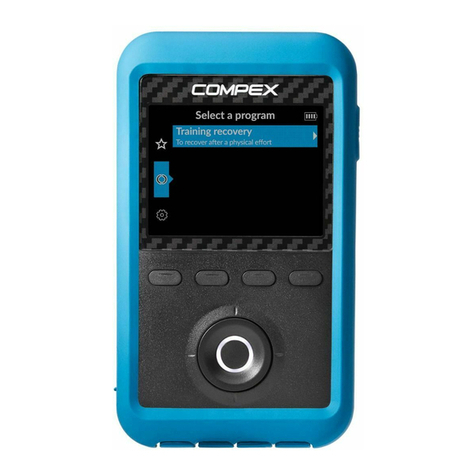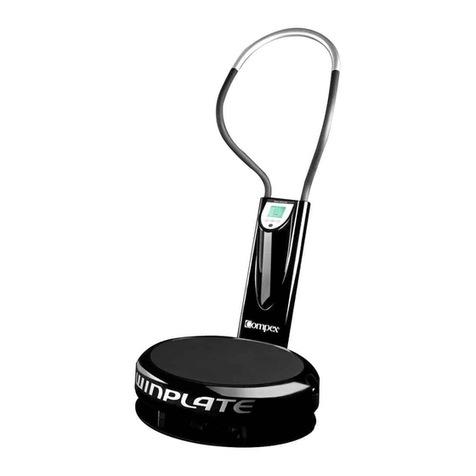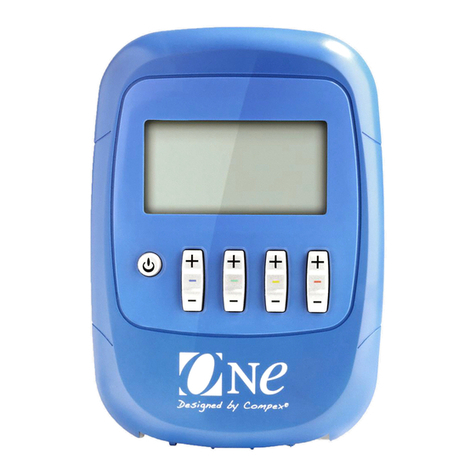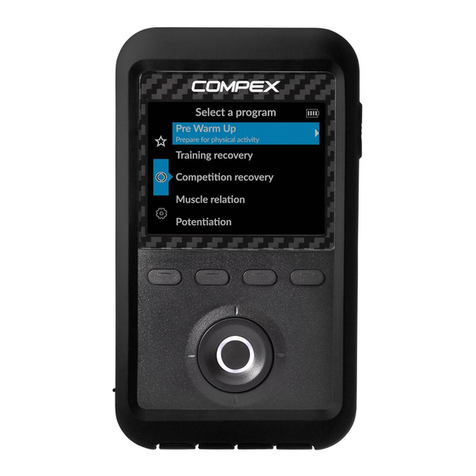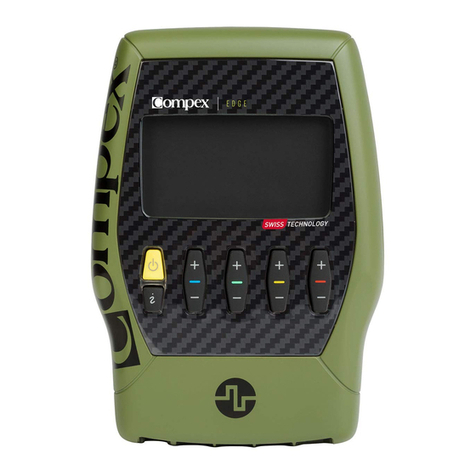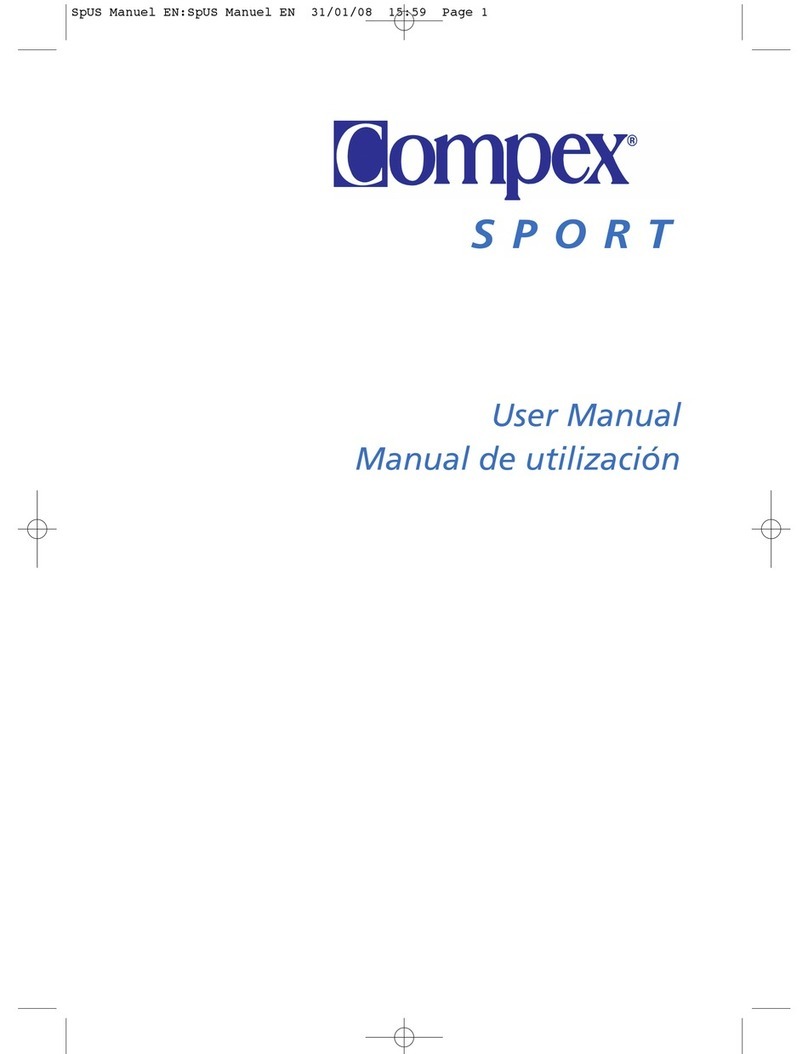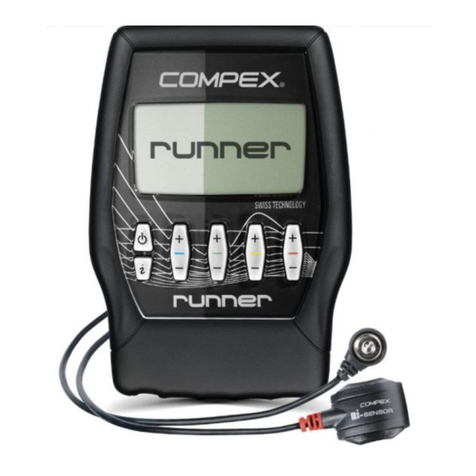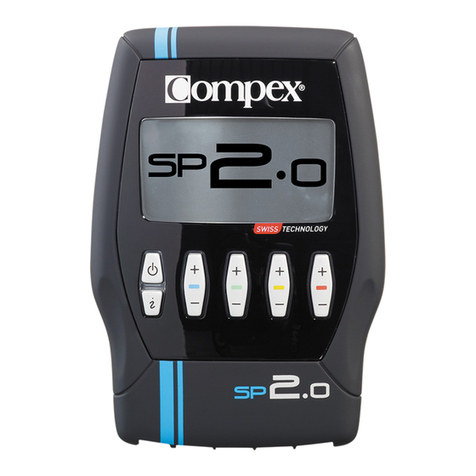English
17
English
16
IV. HOW DOES ELECTROSTIMULATION
WORK?
The principle of electrostimulation is
to stimulate nerve fibres by means of
electrical impulses transmitted by
electrodes.
The electrical impulses generated by
Compex stimulators are high-quality
impulses – ensuring safety, comfort
and efficiency – that stimulate
different types of nerve fibres:
1. the motor nerves to stimulate a muscular
response. The quantity of work and the benefits
obtained depend on the stimulation parameters.
This is known as electromuscularstimulation (EMS).
2. certain types of sensitive nerve fibres to
obtain analgesic or pain-relieving effects.
1. Motor nerve
stimulation (EMS)
In voluntary activity, the order for
muscular work comes from the brain,
which sends a command to the nerve
fibres in the form of an electrical
signal. This signal is then transmitted
to the muscular fibres, which contract.
The principle of electrostimulation
accurately reproduces the process
observed during a voluntary contrac-
tion. The stimulator sends an electrical
current impulse to the nerve fibres,
exciting them. This excitation is then
transmitted to the muscular fibres
causing a basic mechanical response
(= muscular twitch). The latter
constitutes the basic requirement
for muscular contraction.
This muscular response is completely
identical to muscular work controlled
by the brain. In other words, the
muscle cannot distinguish whether
the command comes from the brain
or from the stimulator.
The parameters of the Compex
programs (number of impulses per
second, contraction time, rest time,
total program time) subject the
Electrical
impulse
Motor
nerve Stimulated
muscle
Basic mechanical response = muscular twitch
Excitation Excitation
transmission
muscles to different types of work,
according to muscular fibres. In fact,
different types of muscular fibres may
be distinguished according to their
respective contraction speed: slow,
intermediate and fast fibres. The fast
fibres will obviously predominate in a
sprinter, while a marathon runner will
have more slow fibres.
With a good knowledge of human
physiology and a perfect mastery of
the stimulation parameters of the
various programs, the muscular work
can be directed very precisely towards
the desired goal (muscular reinforce-
ment, increased blood flow, firming
up, etc.).
2. Stimulation of the
sensitive nerves
The electrical impulses can also excite
the sensitive nerve fibres to obtain an
analgesic or pain-relieving effect.
The stimulation of the tactile sensitive
nerve fibres blocks the transmission
of pain by the nervous system.
The stimulation of another type of
sensitive fibres creates an increase in
the production of endorphins and,
therefore, a reduction of pain.
With pain relief programs, electrosti-
mulation can be used to treat localized
sharp or chronic pains as well as
muscular pains.
This message may mean that:
1) there is no electrode connected to this
channel;
2) the electrodes are old, worn out and/or the
contact is poor: try using new electrodes;
3) the electrode cable is defective: try it using
another channel. If cable shows a default again,
please replace.
Recharging error
Arecharging error may happen
during charging. The Compex
“bleeps” continuously and the
following screen is displayed:
If this message appears, disconnect
the charger and the device switches
off automatically. Please contact the
hotline, noting this error code.
If, for any reason, you experience
any other trouble with your device,
please contact the hotline mentioned
and approved by Compex Médical SA.
11a The small battery symbol has only two
reference marks: The batteries are losing their
charge. Interrupt the session and recharge the
device (see the following section).
11b The , symbol normally displayed
above the “+”/“–” key of channel 4 has disappea-
red ()and the small battery flashes: The
batteries are completely flat. It is no longer
possible to use the device. Recharge it
immediately (see the following section).
Recharging
To recharge the Compex, first
disconnect the electrode cables from
the device, then plug the charger in a
socket and lastly connect the stimula-
tor to the charger (see in section I:
“Connecting the charger”). The
charge menu illustrated below appears
automatically.
START
13a
14a
Fig.13
Fig.14
Fig.15
12a The Compex has been charging for 3 mi-
nutes and 8 seconds (a full charge may take
from 1h30 to 2 hours with the rapid charger
delivered with your device).
12b Charging is in progress and the small
battery symbol is not completely full.
When charging is completed, total charge
duration flashes and the small battery is
completely full. The Compex switches off
automatically as soon as you disconnect the
charger.
.
8. Problems and solutions
Electrode fault
13a-14a The Compex “bleeps” and alterna-
tively displays the symbol of a couple of elec-
trodes and an arrow pointing to the channel
where a problem has been detected. Below,
the stimulator has detected an electrode
fault on channel 2.
12a 12b
Fig.12
